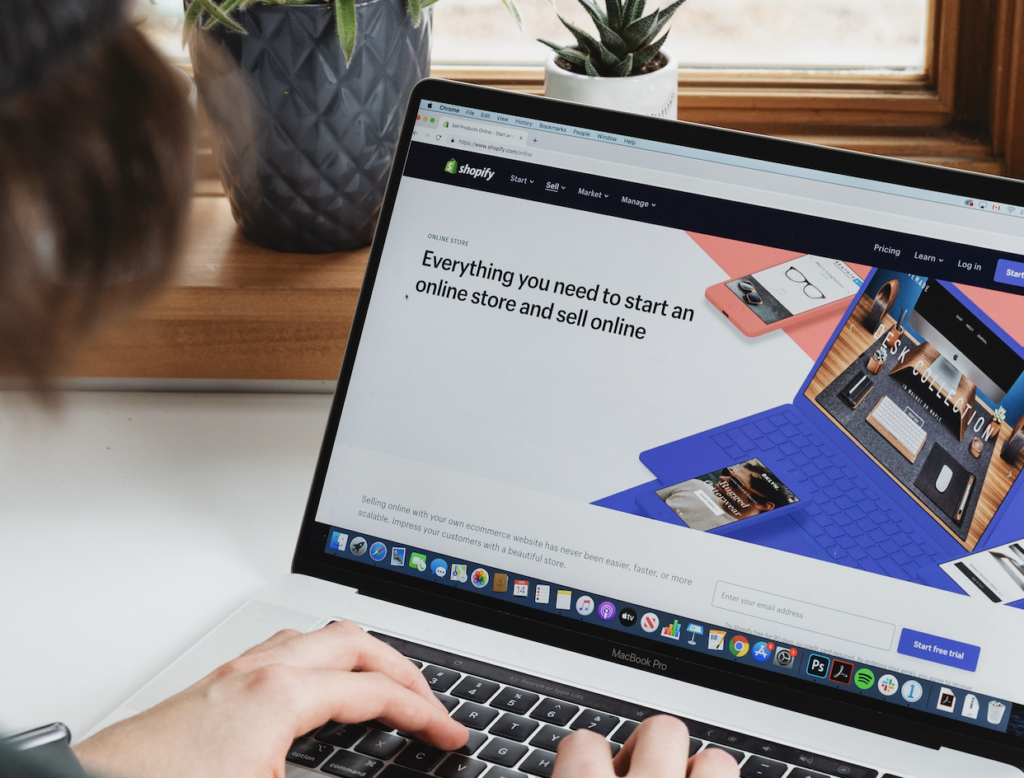
No matter whatever the business is, the purpose of every business is to make a new customer.
And, in order to attract new customers, you must first better understand their requirements.
The shopping experience has changed dramatically in recent years, as we are increasingly using the Internet for all of our needs.
We surf the internet to find the solution for our every problem, not just to look for products.
Our constant research makes a fantastic business opportunity for entrepreneurs looking to acquire clients online.
To establish a successful customer affinity, businesses must shift their attention from promoting items to assisting prospects by giving them helpful information to facilitate the purchase process.
Businesses can have a good chance of converting a website visitor into a customer if they do so.
Recognizing how your consumers buy and aligning your eCommerce marketing strategies, pricing, and sales cycle can help you increase conversions & retention rates and decrease your selling expense.
One of the most common mistakes we see most SaaS organizations make is failing to coordinate their processes.
Let’s start with a simple explanation of the buying cycle to see how you may improve your sales process to meet your clients’ buying cycle.
What is the eCommerce Buying Cycle?

The purchasing cycle describes the steps buyers take to make a purchase.
It begins with the client being aware of a problem and the need to solve it, followed by a search for and consideration of all available solutions, and finally, the purchase.
Buying cycle evolves across multiple channels and platforms. Also, it can go for days and months, relying on your business type.
Because the Internet makes it so easy for customers to conduct their research before making a purchase, you must make it as simple as possible for them to do so.
It is worth noticing that your business can’t control the customer journey with the company, but you can make it easy for them.
This blog article will go through the stages of the purchase cycle, as well as what you should do to guide your consumers through them.
How does the purchase cycle work for the eCommerce online store?

No matter how our shopping & research method is changed, we still follow a set of steps when it comes to purchasing important items.
Knowing these steps and also how they connect to your clients’ purchasing processes can assist you in focusing your efforts on giving them the content and information they require to move forward in the purchasing process.
Customers anticipate various interactions with you based on their steps; thus, each level necessitates a distinct set of tactics to push them to progress towards the next phase of the process.
At each step, the aim isn’t to close the deal. Rather, concentrate on getting each consumer to the next level as quickly as possible.
Therefore, we should tailor our strategy and sales procedure to each customer’s stage of the buying process.
Let’s go through each stage of the cycle in further depth.
Knowing the needs

It’s the initial step of the buying cycle when potential buyers become aware of an issue and begin to look for a solution.
Also, this is the point at which a consumer understands who you are and what your business is all about.
This stage is crucial because it allows you to tailor your message to the target market niche.
This is the process of adapting different forms of marketing & advertising such as content marketing, paid advertisement, SEO for eCommerce sites, and many more to create a buzz.
Potential clients are more inclined to proceed in their purchasing journey with your site if they are aware of your products or services and how they would accomplish their goals.
Research & consideration stage

In this stage, customers are aware of what they want, and they will conduct research to obtain it. They will explore all solutions for resolving their problem.
You should put in more effort to showcase the advantages of your product and services.
This is also the time to give thorough information on how your product or service may help them attain their objective more simply than the competitors.
Some consumers are looking for scalability, while others are looking for a low-cost solution.
However, segmenting clients and establishing their most essential demands is critical at this phase.
Alternative Preference stage

This is the stage where prospects will compare all the alternatives which can solve their problem.
They proceed to weigh their options and limit their options until they find the one thing that they are happy with and can afford.
It’s time to pamper your customers if they need some more info to choose you over your competitors.
Since your involvement throughout the evaluation stage is crucial, try to have customer contact details on hand so that you may gently give any further information the buyer/reader may want.
It’s now up to your sales force to convince clients that your service or product is the best option among the alternatives they’re evaluating.
Each consumer will ultimately be willing to hit the trigger on a purchase and go on to the next stage: buying.
Purchasing stage

You’ve succeeded in convincing prospects to this point. Don’t back out now they’ve chosen they would like you to sell to them!
Keep it as seamless as possible for customers to buy from your website. We frequently encounter websites that begin to add on fees, complicate delivery alternatives, or send out heaps of information.
Make every effort to guarantee a smooth transition from a decision to delivery.
Here are a few pointers to help you:
- Provide all key data, such as the returns process, shipping cost, and warranty conditions, as quickly as possible, preferable on the product page.
- On the checkout page, don’t add any extra fees.
- If at all feasible, provide a free delivery option.
- Make the checkout procedure as easy as possible for your customers.
- Use discounts and special offers to attract customers to buy.
Post-purchase stage

Customer retention ought to be a big aspect of your entire business plan as an e-commerce organization. Consumers that have already purchased from you are familiar with and trust your shop. Therefore, they require less ‘convincing’ to do so.
Furthermore, as well as your business providing exceptional customer service, devoted clients will most likely recommend your business to their friends and family through word-of-mouth, which is, in my perspective, the most potent kind of branding.
You may establish a great client retention plan for your organization by utilizing loyalty reward programs, referral discount codes, and thank you coupons.
Why is the eCommerce customer buying cycle important?
It is noteworthy that even the most successful companies only convert a small fraction of their prospective clients. The remaining prospects, though, are still in the process of purchasing. They may or may not make a purchase.
You will wind up the customer journey with your store if you haven’t grasped the customer’s perspective while making a purchase.
Your visitors’ decisions on whether or not to buy from your site are primarily influenced by their experience & interaction with it.
Adopting the client’s perspective and attempting to comprehend what your potential consumer expects from you with the first stage of the buying cycle to the final purchase may assist you in succeeding.
Understanding the purchase cycle also aids you in developing more successful marketing strategies.
How to improve for each stage of the purchasing process
The purchasing procedure can’t be sped up. Rather, tailor your sales and marketing efforts to each stage of the buying process.
Let’s take a look at what you should do at each stage to help clients go through the buying process.
Optimize stage 1: Knowing the needs/ awareness
To optimize this stage, your customers should be aware of your products as well as the fact that your product can solve almost all problems.
To get more awareness about your product first, you need to find your prospect’s problems and what they are looking for.
Start publishing the targeted content at the places from where your target audience can find it easily and also get support in resolving certain difficulties.
Optimize stage 2: Research & consideration
At this stage, customers look for the best solutions available for their problems.
Again targeted content can come to the rescue — articles, case studies, and videos all educate buyers about your solution and emphasize reasons to select your product over rivals.
However, you can also create multiple price tiers with product options tailored to certain consumer personas or price ranges.
Now your prospects know what they want and why to choose your product over your competitors.
Optimize stage 3: Alternative Preference
In this buying cycle phase, you need to convince your potential customer to buy your product.
You can win by earning trust rather than educating prospects at this stage. Now it’s your product’s turn to speak about its quality.
Customer reviews, product advantages, success stories, social proofs to your website, existing customers’ logos can increase their trust and push them toward making a purchase.
Optimize stage 4: Purchasing phase
Finally, your prospective consumer decides to buy. Your consumer is willing to invest in your solution.
Check whether your price is correct and what your clients expect to spend. To optimize your income, always choose value-based pricing.
Optimize stage 5: Post-purchase phase
Ensure that your consumer is happy with your service and goods in this final stage so that he will remain loyal to your company.
Request reviews or case studies from your satisfied clients as they get more experience with your business, or encourage them to suggest you to other potential consumers.
Loyalty and referral programs might help you boost your retention percentage.
Let’s wind it up
Finally, keep in mind that your eCommerce website is ultimately intended for your consumers.
Knowing each phase of the online purchasing process will assist you in structuring your marketing and advertising resources to fulfill your customers’ needs.
Analyze what your consumer goes through while making a purchasing decision, and adjust your business appropriately. So you can better understand your customers and engage them in your business.
The post Understanding & Optimizing the Buying Cycle for eCommerce Websites appeared first on noupe.








